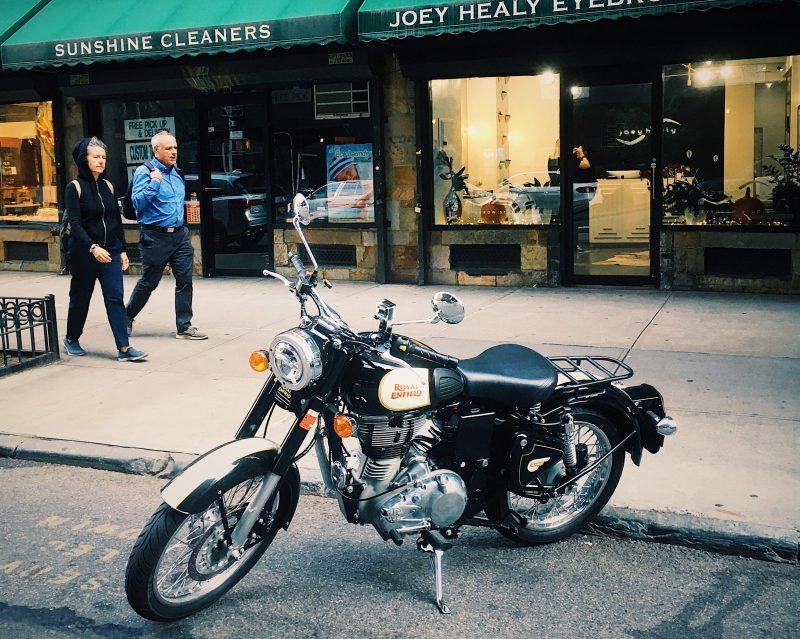Op-Ed: Should We Toll Motorcycles Like SUVs?
The coming of congestion pricing in Manhattan brings questions about the best mix of vehicles for the Central Business District.

Congestion pricing — the tolling of vehicles entering the Central Business District — will arrive in New York City in a little more than a year, and policy makers are grappling with a host of questions about its implementation. An important one is: What mix of vehicles do we want in the congestion-pricing zone?
We should explore how the choice of vehicle affects congestion, and how we might reduce congestion even further by incentivizing smaller vehicles on our streets — such as motorcycles. Size matters on the crowded streets of this city — and, in this case, smaller is better.

Motorcycles should get a discount or an exemption from congestion pricing because they are incrementally “better” than the cars we are trying to restrict with a high toll. They take up far less space than regular cars — especially the SUVs that dominate our roads and cause a disproportionate amount of carnage.
For instance, the wheelbase of a Chevy Suburban is almost 11 feet, while the wheelbase of my motorcycle is less than 5 feet. Plus, it’s legal in New York State for two motorcycles to travel side by side in the same lane. That’s at least four people on four vehicles in the space of one SUV. Or eight, if each motorcycle also has a passenger — in other words, many more people than an SUV, which often has just one person in it.
It’s not just about size, though, but social and environmental impact. That Suburban gets an EPA combined gas mileage of 18 miles to the gallon. My motorcycle? I’m averaging about 50 miles per gallon. (Nope, it’s not a hybrid.) Electric motorcycles, scooters, and mopeds exist, too — just download the Revel app!
Further, heavy vehicles like SUVs are associated with greater traffic fatalities. The city’s Department of Transportation recently began tracking the kinds of vehicles involved in crashes because of the huge jump in pedestrian and cyclist fatalities from SUVs.
So, what could happen if we charge SUVs more while charging motorcycles less, or even nothing? Maybe not much in the first year of congestion pricing — but what about five years later, or 10 or 20?
Internationally, evidence from municipalities with congestion pricing suggests that differentiating tolling by size of vehicle can reduce congestion. London and Stockholm, for example, both exempt motorcycles from tolls in order to encourage switching from automobiles to motorcycles.
In New York City, however, we lack tools to thoroughly analyze the benefits of switching to smaller vehicles. The influential Regional Plan Association recently examined the traffic, environmental, health and revenue benefits of several options for implementing congestion pricing. The RPA stated that “[l]arger vehicles have a larger impact and should be charged more.” But it didn’t explore the effects of passenger vehicle size because current traffic models don’t enable us to do so. We need new models.
We actually do have a living example of “size-switching,” as well as a possible data source, however: The moped-sharing company Revel claims that its trips are mostly “battery-powered replacements for Uber rides.” I can support the general premise: using my motorcycle, I take trips that I once took using Lyft and Juno.
If we multiplied that “size-switching” effect by a factor of five, or 50, or 500, what would it mean for congestion in Manhattan? Without incentivizing smaller vehicles, we could be missing out on chances to reduce congestion … without even realizing it.
If you are a transportation-policy modeler and are up to the challenge of modeling how finicky human beings might switch between different vehicle sizes in response to congestion fees, send me a message. Let’s talk about where we can get the data and how we can make a useful policy model. Large municipalities all over the country are watching us, the first large American city to implement a central business district congestion-pricing scheme. Here’s our chance to show what we can do.
Manhattan resident Chris Sequeira (@chrisjsequeira) is a transportation-environmental modeler and community-engagement specialist. The opinions he expresses herein are not necessarily shared by Streetsblog, which consistently covers the battle to remove motorized vehicles from the streets of New York.





